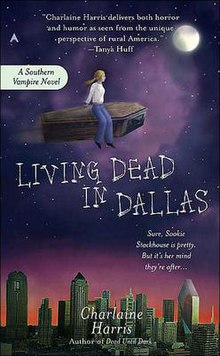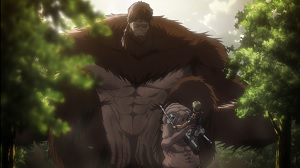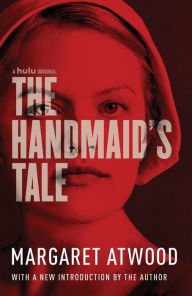
Natsume Yūjin-chō Roku is the sixth season of the long-running series (also known as Natsume’s Book of Friends). I previously reviewed seasons 1-4 here and season 5 here.
Natsume Yūjin-chō follows the ongoing misadventures of teenage Takashi Natsume, who has the ability to see youkai (spirits out of Japanese folklore) when most people cannot. Because the series is episodic, it’s generally easy to slip into the middle with minimal knowledge of what has happened in the past, but a few of Roku‘s episodes work better knowing Takashi’s (and his grandmother Reiko’s) history.
Takashi has met other people who can see youkai, and the sixth season features two two-part episodes dealing with exorcists and their relationships with their youkai familiars. Most humans who can see youkai find work in exorcism, which is a practice Takashi dislikes. Like his grandmother Reiko, who wrote down the names of youkai in what became the Book of Friends, he prefers to settle things on more humane terms without imprisoning any wayward spirits.
But he is friends with Natori, who is an exorcist, and because of that friendship Takashi becomes involved with couple incidents involving old familiars and how they behave when the human they were bonded with has passed on. Takashi also has to deal with the knowledge that the Book of Friends is not something he can share (since we learned it was a forbidden practice last season). This creates a real fear in him that he can’t let Natori know the truth about what he’s carrying, while at the same time Natori is aware that there is something Takashi is protecting that he will not share with anyone.
It was a surprising bit of story advancement in a series which largely works as a slice of life with youkai. And that’s not the only revelation, as Roku teases more of Takashi’s heritage, but this time in regards to a different ancestor we have not yet met.
The remaining episodes mostly run with the usual formula of Takashi encounters a youkai with a problem or who is causing a problem. This is not a strike against the series, as that’s long been the heart of the show, but it doesn’t break much in the way of new ground.
There is one episode worth calling out though, for being the first genuinely creepy episode of Natsume Yūjin-chō. Despite being a series about youkai, it’s usually tame with its imagery. Even if the characters are startled, they’re rarely meant to be terrified. “Nitai-sama” takes its cues from more horror oriented fare though, where the youkai is known to be malevolent and takes its time in revealing itself. It’s probably an insufficient scare for those used to actual horror, but the episode is definitely more intense than the usual for Natsume Yūjin-chō and especially will not go over well with people who have a fear of dolls.
Roku isn’t going to win anyone over who isn’t already watching, but for those who are, it’s a surprisingly forward look at potential stories to come. Now the question is, will there be a Natsume Yūjin-chō Nana (Seven)?
Number of Episodes: 11
Pluses: more of the same low key storytelling, plot development for Takashi, lots of lovely stories about the bonds between humans and youkai
Minuses: more of the same low key storytelling, season is on the short side, story doesn’t really do anything with the potential complications that come up
Natsume Yūjin-chō Roku is currently streaming at Crunchyroll (subtitled).

Laurie Tom is a fantasy and science fiction writer based in southern California. Since she was a kid she has considered books, video games, and anime in roughly equal portions to be her primary source of entertainment. Laurie is a previous grand prize winner of Writers of the Future and since then her work has been published in Galaxy’s Edge, Strange Horizons, and the Year’s Best YA Speculative Fiction.

 Club Dead is a romance/mystery/horror novel from 2003, the third in the Sookie Stackhouse series of novels by Charlaine Harris, which is the basis of the HBO show True Blood–this book was used very loosely as the basis for season 3 of the show. The first book in the series is Dead Until Dark, (
Club Dead is a romance/mystery/horror novel from 2003, the third in the Sookie Stackhouse series of novels by Charlaine Harris, which is the basis of the HBO show True Blood–this book was used very loosely as the basis for season 3 of the show. The first book in the series is Dead Until Dark, (
 Living Dead in Dallas is a romance/mystery/horror novel from 2002, the second in the Sookie Stackhouse series of novels by Charlaine Harris, which is the basis of the HBO show True Blood–this book was the basis for season 2 of the show. The first book in the series is Dead Until Dark,
Living Dead in Dallas is a romance/mystery/horror novel from 2002, the second in the Sookie Stackhouse series of novels by Charlaine Harris, which is the basis of the HBO show True Blood–this book was the basis for season 2 of the show. The first book in the series is Dead Until Dark, 
 Dead Until Dark is a romance/mystery/horror novel published in 2001, the first in the Sookie Stackhouse series of novels by Charlaine Harris, which is the basis of the HBO show True Blood (
Dead Until Dark is a romance/mystery/horror novel published in 2001, the first in the Sookie Stackhouse series of novels by Charlaine Harris, which is the basis of the HBO show True Blood ( 10 Cloverfield Lane is a 2016 suspense movie published by Paramount Pictures.
10 Cloverfield Lane is a 2016 suspense movie published by Paramount Pictures. The Handmaid’s Tale is a near future dystopia published in 1985 about a United States of America that has become an oppressive theocracy. ((It has also very recently become a TV series streaming on Hulu, but I haven’t seen the show so I don’t have an opinion one way or the other about that)
The Handmaid’s Tale is a near future dystopia published in 1985 about a United States of America that has become an oppressive theocracy. ((It has also very recently become a TV series streaming on Hulu, but I haven’t seen the show so I don’t have an opinion one way or the other about that) Shrek The Musical is a theater version of the 2001 CG Dreamworks comedy adventure Shrek. As with the movie, the play is about the ogre Shrek who lives a contented secluded life in a swamp, but his solitude is interrupted with an influx of fairytale creatures who have been evicted by Lord Farquad to transform his kingdom into his perfect image of a kingdom. When Shrek goes to confront Farquad (meeting Donkey, a talking donkey on the way) he is coerced into mounting a rescue mission of Princess Fiona from a dragon-guarded tower to bring her back to be Farquad’s bride.
Shrek The Musical is a theater version of the 2001 CG Dreamworks comedy adventure Shrek. As with the movie, the play is about the ogre Shrek who lives a contented secluded life in a swamp, but his solitude is interrupted with an influx of fairytale creatures who have been evicted by Lord Farquad to transform his kingdom into his perfect image of a kingdom. When Shrek goes to confront Farquad (meeting Donkey, a talking donkey on the way) he is coerced into mounting a rescue mission of Princess Fiona from a dragon-guarded tower to bring her back to be Farquad’s bride.